Purple-crowned Lorikeet
Also known as:
Porphyry-crowned Lorikeet, Blue-crowned Lorikeet, Purple-capped Lorikeet or Lory, Purple-capped Parakeet
Also known as:
Porphyry-crowned Lorikeet, Blue-crowned Lorikeet, Purple-capped Lorikeet or Lory, Purple-capped Parakeet

Glossopsitta

porphyrocephala
Size:
16 cm (6.2 in)
Weight:
40-50 g (1.4-1.75 oz)
Subspecies including nominate:
one
Colour Adult:
Both adults in general green; orange forehead; deep purple crown; yellow ear coverts; pale blue underparts; sides of breast yellow; bronze/brown upper mantle; red underwing coverts. Beak black. Eye brown.
Colour Juvenile:
Duller than adults with green crown.
Call:
Calls are shrill notes given continuously in flight. Sharp, metallic chattering given while feeding.
More Information:
Content Sources:
CITES
BirdLife International
Cornell Lab of Ornithology/Birds of the World
A Guide to Parrots of the World, Juniper and Parr, 1998
Parrots of the World, Forshaw and Cooper, 1977.
Parrots of the World, Forshaw, 2006.
Parrots in Aviculture, Low, 1992.
Captive Status:
Rare, less so in Australia.
Longevity:
About 10 yrs.
Housing:
Enclosure with well drained, sloping floor, or suspended cage over well-sealed concrete floor.
Diet:
Commercial lory nectar formulated for small species or a homemade mix of lactose-free baby cereal, honey and malt extract or molasses, mixed with filtered water and made fresh once or twice daily; fruits such as: apple, pear, cactus fruits.
Enrichment:
Provide as large an aviary as possible. Planted aviary is a bonus. Enjoys bathing, so provide overhead misters or shallow bowls of water. Provide easy to clean bird-safe plastic toys, and bird-safe, unsprayed willow, fir, pine and flowering branches which can be used as hiding places and for chewing, which can be removed for cleaning daily.
Nest Box Size:
Diagonal roosting and nesting box 12″ x 6″ x 7″ (30.5 cm x 15.2 cm x 17.8 cm).
Clutch Size:
3-4
Fledging Age:
7-8 weeks
Hatch Weight:
—
Peak Weight:
—
Weaning Weight:
—
World Population:
Unknown, but described as common in most of its range. Decreasing.
IUCN Red List Status:
Least Concern
CITES Listing:
Appendix II
Threat Summary:
Common in most of range, however, in Victoria less so. A substantial decrease in numbers has been documented in SW Australia. The population is suspected to be in decline due to ongoing habitat destruction.
Range:
SW Australia and SE mainland Australia.
Habitat:
Found up to 600 m (1968 ft) in drier woodland and forest, occasionally reaching into urban areas to feed on ornamental flowers.
Wild Diet:
Feeds on Eucalyptus pollen, flowers and nectar, fruit and blossoms from Melaleuca, Callistemon and Myoporum insulare, and Banksia flowers. Has adapted to eating cultivated fruits.
Ecology and Behaviour:
Is nomadic due to unpredictability of flowering eucalypts. Usually seen in small parties to large flocks of hundreds of individuals. Feeds in lower branches and shrubs. Roosts communally in large groups. at times a long way from feeding areas.
Clutch and Egg Size:
3-4 rounded eggs, 20.5 x 16.5 mm (0.8 x 0.6 in).
Breeding Season:
August-December. Nest is in hollow limb or tree cavity.
Related Links:
—
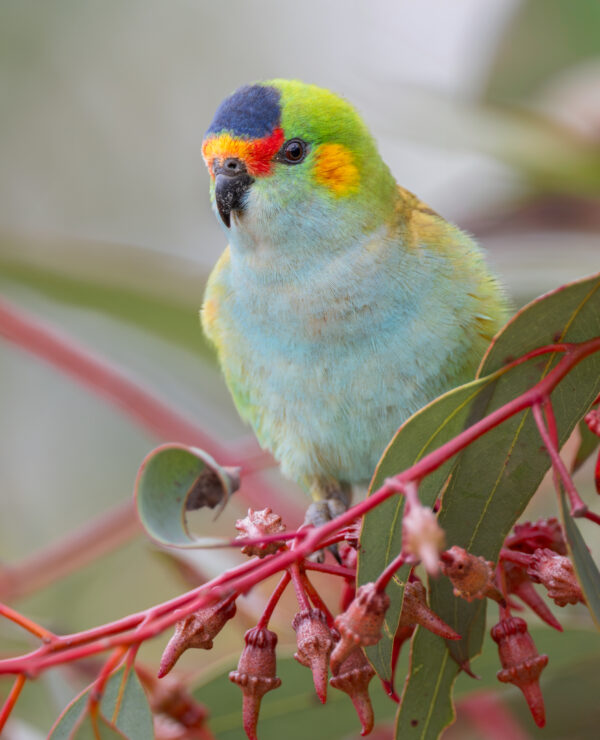

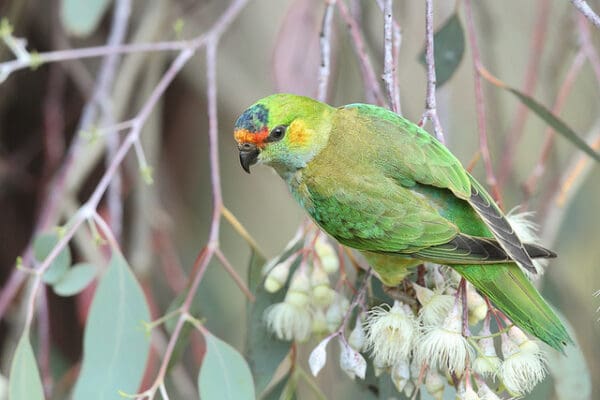
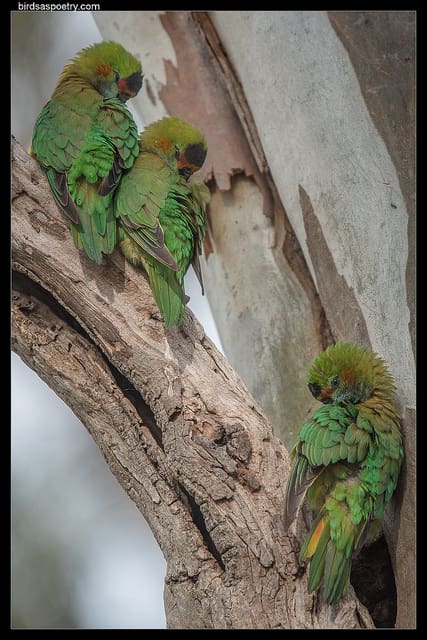
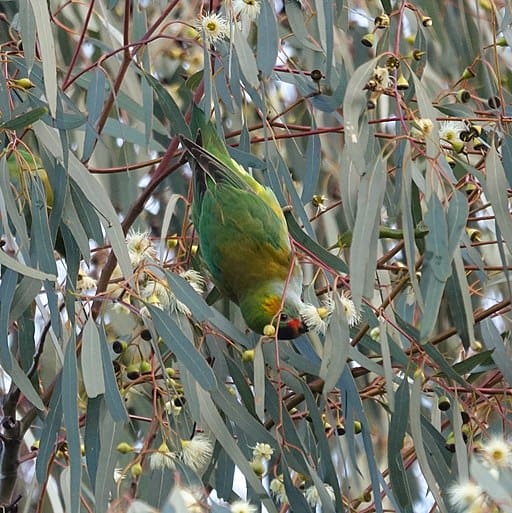

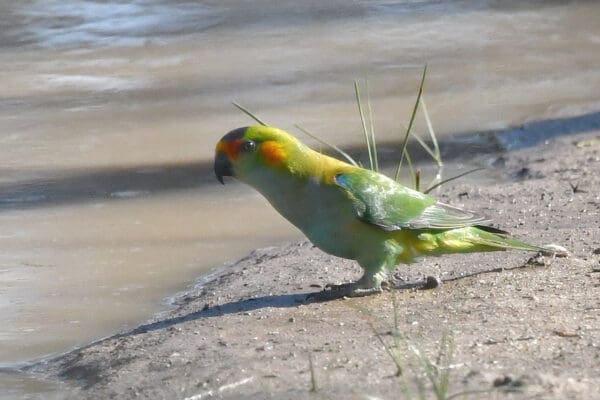

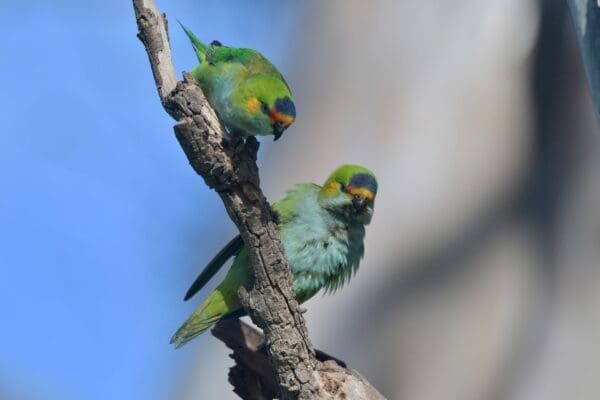
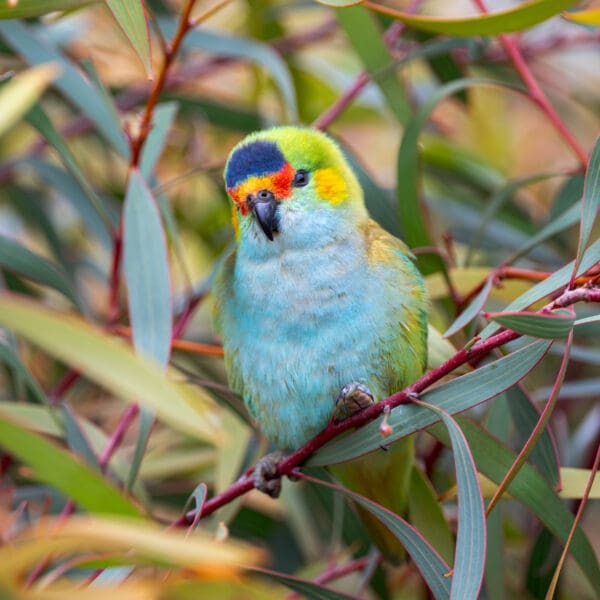
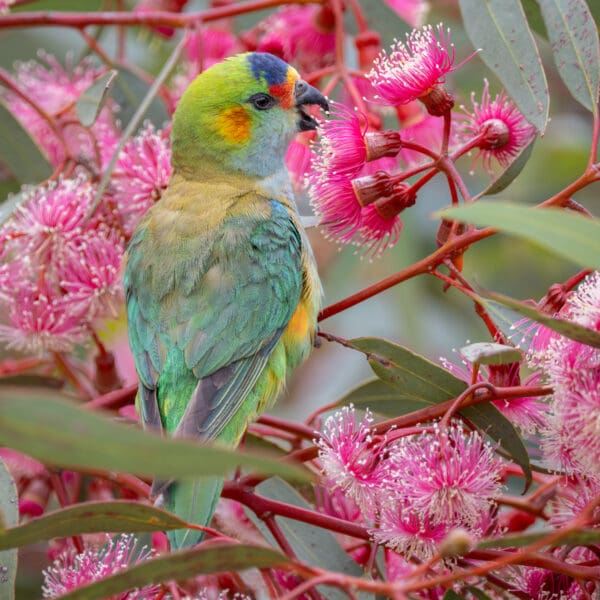
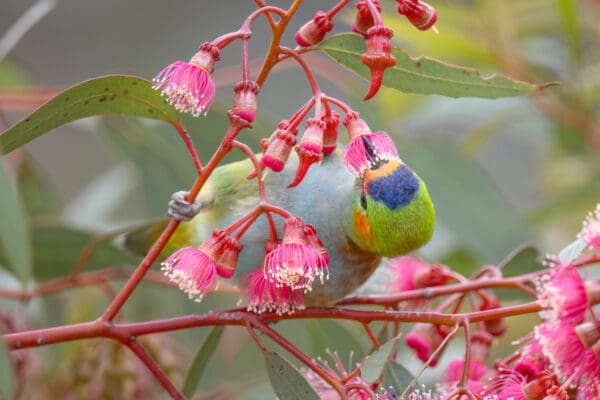
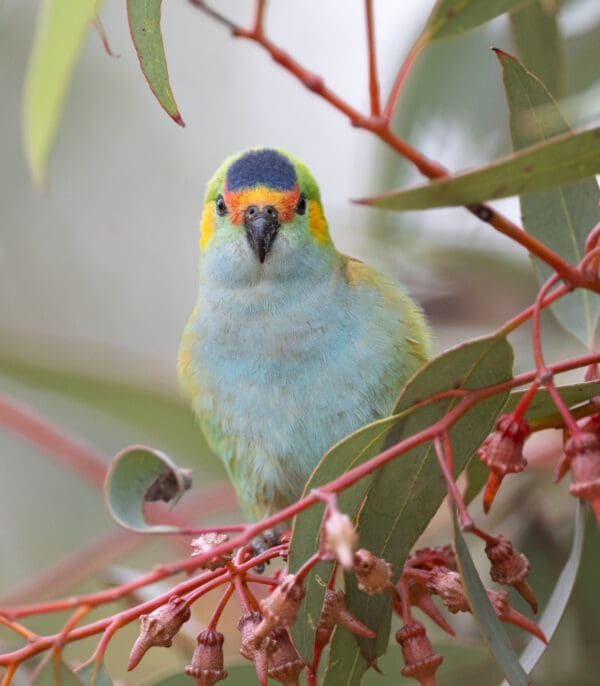
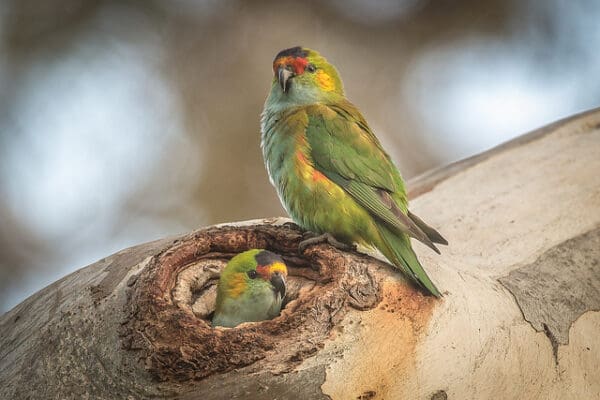

![© Brian McCauley [CC BY-SA 2.0] via Flickr](https://parrots.org/wp-content/uploads/2023/01/wpt_Purple-crowned-Lorikeet_1235-15-100x100.jpg)
![© Leo [CC BY-NC 2.0] via Flickr](https://parrots.org/wp-content/uploads/2023/01/wpt_Purple-crowned-Lorikeet_1235-12-100x100.jpg)
![© I Am birdsaspoetry.com [CC BY 2.0] via Flickr](https://parrots.org/wp-content/uploads/2023/01/wpt_Purple-crowned-Lorikeet_1235-11-100x100.jpg)
![© Mike's Birds from Riverside, CA, US (Purple-crowned Lorikeet) [CC BY-SA 2.0] via Wikimedia Commons](https://parrots.org/wp-content/uploads/2023/01/wpt_Purple-crowned-Lorikeet_1235-5-100x100.jpg)
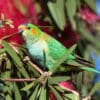
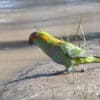

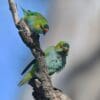
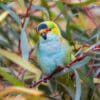
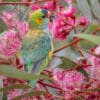
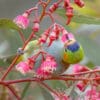
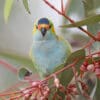
![© I Am birdsaspoetry.com [CC BY 2.0] via Flickr A pair of Purple-crowned Lorikeets perch at a nest cavity](https://parrots.org/wp-content/uploads/2023/01/wpt_Purple-crowned-Lorikeet_1235-8-100x100.jpg)